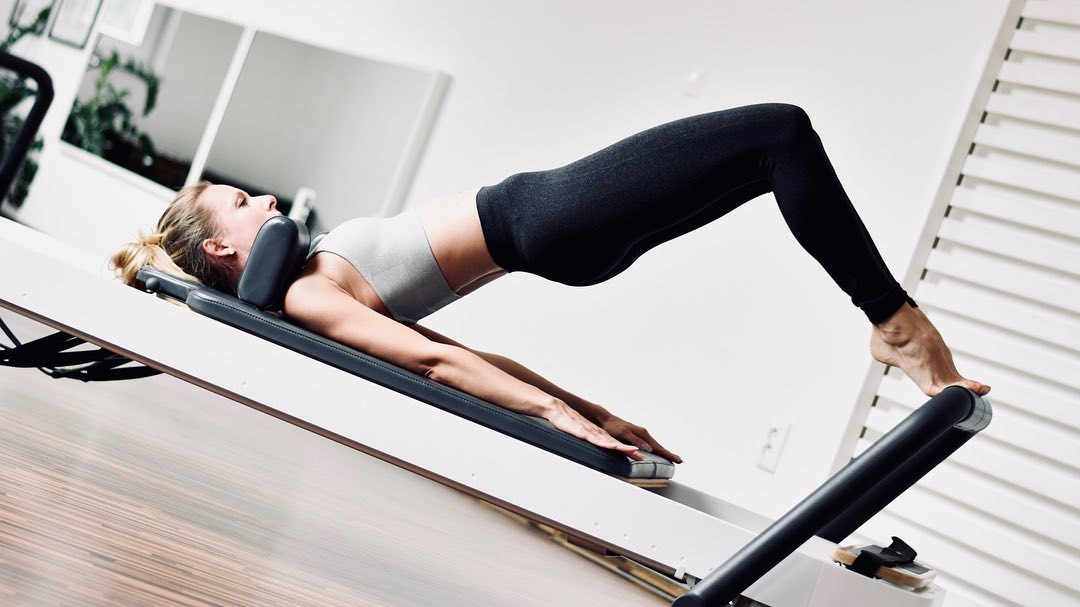Why Pilates Exercise Works - A Guide to Pilates Principles for Beginners
Pilates is a form of exercise that emphasizes strength, flexibility, and core control. Developed by Joseph Pilates in the early 20th century, this method is gaining popularity as more people discover its numerous benefits. However, what makes Pilates so effective? The answer lies in the scientific principles upon which it is based.
What are the effects and benefits of Pilates exercises?
- It improves core strength and stability, aiding overall fitness, body posture, and balance while preventing injuries.
- Enhances the mind-body connection through concentration and control.
- Increases flexibility and mobility.
- Is an excellent choice for individuals recovering from injuries or experiencing joint pain.
- Can assist with weight loss and muscle toning.
- Improves balance and coordination.
- Enhances breathing and lung capacity.
- Improves bone density.
- Boosts mental well-being and reduces stress.
- Can help with conditions such as chronic back pain, scoliosis, and osteoporosis.
- Suitable for people of all ages and fitness levels.
- Can be modified for individuals with injuries or physical limitations.
- Can complement other forms of physical activity or sports.
- Practices are done on a mat or using equipment like Reformers, Cadillacs, and Wunda chairs (Combo).
One of the most important principles of Pilates is the strength and stability of the core. Your major muscles, including abdominal, back, and hip muscles, play a crucial role in overall fitness. They help maintain proper body posture, support the spine, and improve balance and stability. Pilates focuses on these muscles through exercises like the "Powerhouse," involving a combination of movements such as plank, bridge, and side plank. According to a study published in the Journal of Bodywork and Movement Therapies, Pilates-based exercises were effective in improving core strength and stability in healthy adults.
Another principle of Pilates is the connection of the mind and body. It involves the relationship between the mind and body and how they influence each other during exercise. Pilates emphasizes the connection between the mind and body by focusing on proper form and control in every movement.
The mind-body connection is considered an essential aspect of exercise because it allows individuals to be more present and engaged in their physical activity. This can lead to a greater sense of achievement and satisfaction with exercise and a deeper connection with the body. This, in turn, can transfer to other areas of life, such as work, relationships, and mental well-being.
Research has shown that practices focusing on the mind-body connection, such as yoga, tai chi, and Pilates, can have a positive impact on mental health. They can reduce stress, improve mood, and enhance overall well-being. A study published in the Journal of Behavioral Medicine in 2012 found that a 12-week yoga intervention led to a significant reduction in perceived stress and improved mood among college students. Another study published in the Journal of Alternative and Complementary Medicine in 2014 found that a 12-week yoga series led to significant improvement in symptoms of anxiety and depression in veterans with post-traumatic stress disorder (PTSD).
Pilates primarily emphasizes the connection of the mind and body by focusing on proper form and control in every movement. By focusing on breath and movement, practitioners can be more present and engaged in their physical activity, leading to a greater sense of achievement and satisfaction with exercise. Additionally, with a better understanding of one's own body, individuals can move with greater precision and control, leading to a deeper connection with the body.
Flexibility and mobility are also important principles of Pilates. Flexibility refers to the ability of your muscles and joints to move through the full range of motion, while mobility relates to the ability to move freely and easily. Pilates improves flexibility and mobility through exercises like "Swan" and "Roll-Up," which stretch and elongate the muscles. Pilates is a low-impact form of exercise, meaning it minimally stresses your joints. This makes it an excellent choice for people recovering from injuries, experiencing joint pain, or looking to reduce the risk of injury.

Basic pilates exercises for beginners
The method is built on several key exercises targeting various muscle groups and focusing on different principles. Here are some of the most popular and effective Pilates exercises:
1) Plank:
This exercise is performed in a push-up position, with hands placed directly under the shoulders and the body in a straight line from head to heels. The plank works on major muscles, including the rectus abdominis, transverse abdominis, and obliques, as well as the shoulders and back. It helps improve core strength, overall fitness, body posture, and balance.
2) Hundred:
This exercise is done lying on your back with legs in a tabletop position and arms reaching towards the ceiling. The Hundred targets core muscles along with arms, legs, and buttocks. It is also a cardiovascular exercise, enhancing lung capacity, circulation, and endurance.
3) Roll-Up:
Executed lying on the back with legs in a tabletop position and arms reaching towards the ceiling. The Roll-Up engages core muscles, hip flexors, and hamstrings. It aids in improving flexibility and mobility, particularly in the spine.
4) Single-Leg Circle:
Performed lying on the back with one leg extended towards the ceiling and the other leg in a tabletop position. Single-Leg Circle works on core muscles, hip flexors, and glutes. It contributes to enhancing flexibility and mobility, especially around the hips and lower back.
5) Saw:
This exercise is done in a seated position with legs extended in front and arms reaching towards the feet. The Saw targets core muscles, shoulders, back, and legs. It helps improve flexibility and mobility, particularly in the spine and shoulders.
These are just a few examples of the many Pilates exercises that collaborate to enhance core strength and stability, flexibility, and control.
Pilates equipment, machines and equipment
Pilates is typically practiced on a mat, but it can also be done using various types of equipment. The most popular types of Pilates equipment are the Reformer, Cadillac, and Wunda Chair. Each piece of equipment offers different benefits and challenges, and they can be used to target various muscle groups.
The Reformer is a sliding carriage that moves by pushing and pulling on ropes and straps. The carriage is attached to springs, allowing for different types of leg work and resistance. The Pilates Reformer is a versatile piece of equipment that can be used to target the entire body but is particularly effective for working the core, legs, and arms. It also allows for a greater range of motion and resistance, making exercises more challenging.
The Cadillac, also known as a Trapeze Table, is a large piece of equipment with various accessories such as straps, bars, and springs. The Cadillac enables a wide range of exercises, from stretching to strength training. It is particularly effective for working the upper body, such as the arms and back, but can also be used to target the core and legs.
The Wunda Chair/Combo Chair resembles a bench with a pedal and springs. It allows for various exercises, including leg work, arm work, and foundational exercises. It is particularly effective for working the legs and buttocks but can also be used to target the core and arms. The chair is often used as a complement to matwork, adding an additional challenge.
Pilates is effective due to the principles on which it is based. Core strength and stability, the connection between mind and body, flexibility and mobility, as well as injury prevention, are all key elements of Pilates that contribute to its effectiveness. If you are looking for an exercise that improves your overall fitness, Pilates is definitely worth trying.
Sources:
- Rizzo, A., Postacchini, D., & Bellofiore, M. (2015). Effects of a Pilates-based rehabilitation program on core stability and balance in healthy adults: a randomized controlled trial. Journal of Bodywork and Movement Therapies
- Journal of Behavioral Medicine
- Journal of Alternative and Complementary Medicine
- pilates.com
Did this article help you? If yes, you can also help someone else by sharing this page. You can share your experiences in the comments below the article and help others.
